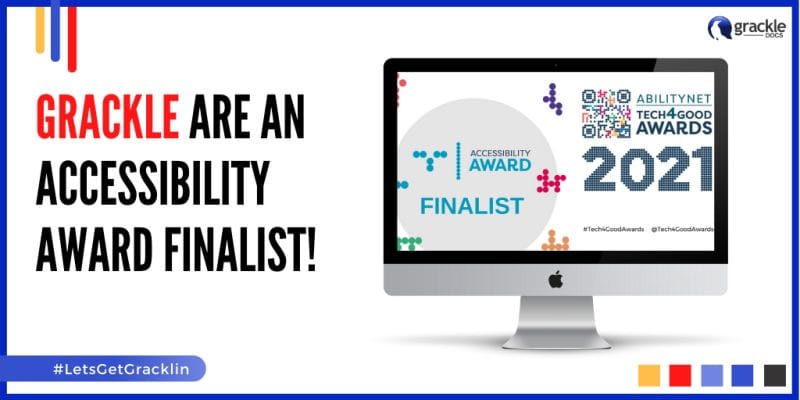Web accessibility standards are guidelines that help ensure that websites and digital content are accessible to individuals with disabilities. These standards are designed to provide equal access to information and services for all users, regardless of their abilities.
Here are some of the most widely recognized web accessibility standards:
- Web Content Accessibility Guidelines (WCAG): The WCAG is a set of guidelines developed by the World Wide Web Consortium (W3C) that provide a framework for making web content accessible to individuals with disabilities. The guidelines are organized into three levels (A, AA, AAA) and cover a range of accessibility issues, including visual, auditory, and cognitive disabilities.
- Americans with Disabilities Act (ADA): The ADA is a US law that prohibits discrimination against individuals with disabilities in public accommodations, including websites. The ADA includes guidelines for web accessibility, which require that websites be accessible to individuals with disabilities, including individuals who are blind, deaf, or have limited mobility.
- Section 508 of the Rehabilitation Act: Section 508 is a US law that requires federal agencies to make their electronic and information technology accessible to individuals with disabilities. The law includes guidelines for web accessibility, including requirements for alternative text, keyboard accessibility, and closed captioning.
- European Union Web Accessibility Directive: The European Union Web Accessibility Directive requires public sector websites and mobile applications to be accessible to individuals with disabilities. The directive includes guidelines for web accessibility, including requirements for alternative text, keyboard accessibility, and audio descriptions.

What are the four major categories of the Web Content Accessibility Guidelines (WCAG)?
The Web Content Accessibility Guidelines (WCAG) is a set of guidelines developed by the World Wide Web Consortium (W3C) that provide a framework for making web content accessible to individuals with disabilities. The WCAG is organized into four major categories, also known as “principles,” which are as follows:
- Perceivable: The perceivable principle focuses on ensuring that web content can be perceived by all users, including those with visual, auditory, and cognitive disabilities. This includes providing alternative text for images, captions for videos, and descriptive headings for content.
- Operable: The operable principle focuses on ensuring that web content is operable by all users, including those with mobility disabilities. This includes providing keyboard navigation and sufficient time for users to complete tasks.
- Understandable: The understandable principle focuses on ensuring that web content is understandable by all users, including those with cognitive disabilities. This includes using clear language and organizing content in a logical and consistent manner.
- Robust: The robust principle focuses on ensuring that web content is compatible with a wide range of assistive technologies, including screen readers and speech recognition software. This includes using standard markup and avoiding reliance on proprietary technologies.
What are WCAG 2.1 AA standards?
WCAG 2.1 AA (Web Content Accessibility Guidelines 2.1 Level AA) are a set of standards developed by the World Wide Web Consortium (W3C) that provide guidelines for making web content more accessible to individuals with disabilities. The WCAG 2.1 AA standards are considered the most current and comprehensive guidelines for web accessibility and are widely adopted by governments, businesses, and organizations around the world.
The WCAG 2.1 AA standards build upon the previous version of the guidelines (WCAG 2.0) and include additional requirements for web content accessibility. Some of the key requirements of the WCAG 2.1 AA standards include:
- Alternative Text for Images: All non-text content, including images, must have alternative text descriptions that convey the same information as the image.
- Captions and Audio Descriptions: Multimedia content, including videos and audio, must have captions and/or audio descriptions to provide accessibility for individuals with hearing disabilities.
- Keyboard Navigation: Websites must be navigable using only a keyboard, to provide accessibility for individuals with mobility disabilities.
- Contrast and Colour: The contrast between text and background must meet certain standards to ensure readability for individuals with low vision.
- Input Assistance: Websites must provide assistance to users when errors are made during form submissions, to ensure accessibility for individuals with cognitive disabilities.

Is WCAG 2.1 a legal requirement in the U.S.?
Yes, WCAG 2.1 (Web Content Accessibility Guidelines 2.1) is considered a legal requirement in the United States. The Americans with Disabilities Act (ADA) does not specifically reference WCAG, but it does require that public accommodations, including websites, be accessible to individuals with disabilities. Courts have interpreted the ADA to apply to websites and have increasingly relied on WCAG as a standard for web accessibility.
In addition to the ADA, there are other laws and regulations that require compliance with WCAG 2.1 in the US. Section 508 of the Rehabilitation Act requires that federal agencies make their electronic and information technology accessible to individuals with disabilities, and WCAG 2.1 is one of the recognized standards for compliance. The 21st Century Communications and Video Accessibility Act also requires that video content be made accessible, and WCAG 2.1 is one of the standards that can be used to ensure compliance.
Overall, while there is no specific law that mandates compliance with WCAG 2.1, it is considered a recognized standard for web accessibility in the US. Failing to comply with web accessibility guidelines can result in legal action and penalties, including fines and legal fees. It is important for businesses and organizations to understand the requirements of web accessibility and take steps to ensure compliance.
Is WCAG 2.1 a legal requirement EU?
Yes, WCAG 2.1 (Web Content Accessibility Guidelines 2.1) is a legal requirement in the European Union (EU). The EU Web Accessibility Directive requires public sector websites and mobile applications to comply with WCAG 2.1 at a minimum level of AA.
The EU Web Accessibility Directive was adopted in 2016 and requires EU member states to ensure that public sector bodies’ websites and mobile applications are accessible to all users, including those with disabilities. The directive was transposed into national law by member states in September 2018 and became applicable on September 23, 2019.
The EU Web Accessibility Directive requires public sector bodies to ensure that their websites and mobile applications meet the following requirements:
- Conform to WCAG 2.1 at a minimum level of AA.
- Publish an accessibility statement describing the level of accessibility of the website or mobile application.
- Provide a feedback mechanism for users to report accessibility issues.
- Conduct regular accessibility testing and evaluation.
- Provide accessible alternatives for non-accessible content.
Overall, WCAG 2.1 is a legal requirement in the EU for public sector websites and mobile applications, and failure to comply with the directive can result in legal action and penalties. It is important for businesses and organizations operating in the EU to understand the requirements of web accessibility and take steps to ensure compliance.

Who creates guidelines and standards for web accessibility?
The guidelines and standards for web accessibility are created by various organizations and groups. Here are some of the major organizations involved in creating web accessibility guidelines and standards:
- World Wide Web Consortium (W3C): The W3C is an international community that develops standards for the web. The W3C created the Web Content Accessibility Guidelines (WCAG), which are widely adopted as the most comprehensive guidelines for web accessibility.
- International Organization for Standardization (ISO): The ISO is a non-governmental organization that develops standards for various industries. The ISO has developed a standard for web accessibility, ISO 40500, which is based on the WCAG.
- European Committee for Standardization (CEN): The CEN is a European standards organization that has developed a standard for web accessibility, EN 301 549, which is based on the WCAG.
- Access Board: The Access Board is a US federal agency that develops accessibility guidelines and standards for various industries, including web accessibility. The Access Board has developed the Section 508 Standards, which require compliance with WCAG 2.0 at a minimum level of AA for federal agencies.
Overall, various organizations and groups work to create guidelines and standards for web accessibility, with the goal of ensuring equal access to information and services for individuals with disabilities.



